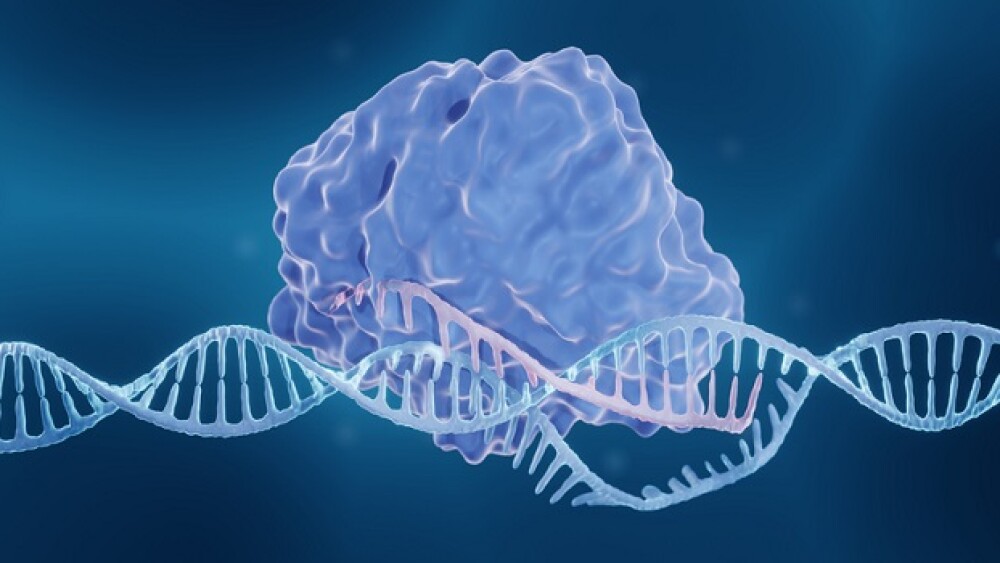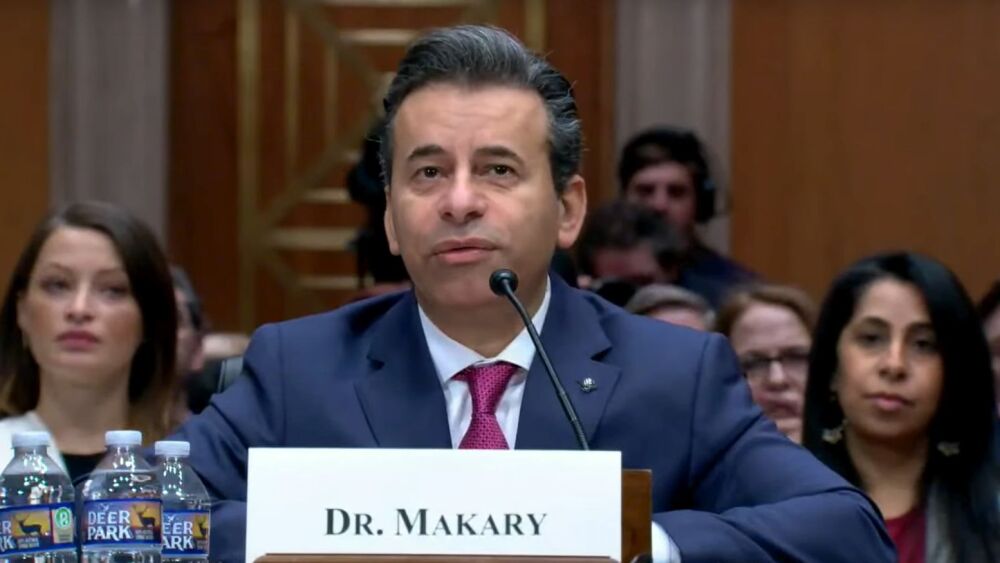The U.K.’s conditional marketing authorization for Vertex Pharmaceuticals and CRISPR Therapeutics’ gene-edited therapy exa-cel raises some potential safety concerns with the risk of off-target effects.
Pictured: Illustration of a CRISPR/Cas9 system on a DNA strand/iStock, Artur Plawgo
This past June marks the 11th anniversary of the development of CRISPR as a genome-editing tool, which earned Jennifer Doudna and Emmanuelle Charpentier the 2020 Nobel Prize in Chemistry. CRISPR-Cas9 technology was revealed to the world in the journal Science more than a decade ago, and it has translated into a gene editing revolution with big discoveries in a relatively short amount of time.
In a world first, the U.K.’s Medicines and Healthcare products Regulatory Agency (MHRA) on Thursday approved CRISPR/Cas9 gene-edited therapy exagamglogene autotemcel (exa-cel)—developed by Vertex Pharmaceuticals and CRISPR Therapeutics, and now to carry the brand name Casgevy—as a potential cure for sickle cell disease (SCD) and transfusion-dependent beta thalassemia (TDT).
While the FDA is still reviewing exa-cel for the two blood disorders—with a PDUFA date of Dec. 8, 2023, for SCD and March 30, 2024, for TDT—there’s every reason to believe the U.S. regulator will follow the lead of its British regulatory counterparts. And it’s just the tip of the iceberg, as bluebird bio, Iovance and Rocket Pharmaceuticals wait patiently in the wings.
Currently, there are more than 50 in-human clinical trials of both in vivo and ex vivo gene editing technologies in the early stages and about 40 of them are CRISPR-based, according to David Liu, a molecular biologist at the Broad Institute and Harvard professor.
Liu, who co-founded Prime Medicine and Beam Therapeutics, told BioSpace this summer that while CRISPR-Cas9 has advantages—such as its modularity—a major limitation of the gene-editing technology is that it causes double-stranded breaks in DNA which lead to unfavorable mutations and off-target effects.
How Safe is Gene Editing?
As promising as CRISPR-Cas9 technology is, it’s a reminder that even good gene edits can go bad, revealing potential threats to the efficacy and safety of therapies based on the Nobel Prize-winning technique. This is particularly true for ex vivo CRISPR therapies like Casgevy, in which cells from a patient are edited in the lab and reintroduced back into the patient.
Cell toxicity and genomic instability are potential side effects from the use of CRISPR-Cas9. The gene editing tool can also cause large rearrangements of DNA through retrotransposition to theoretically trigger tumor development.
While rare, the fact that CRISPR is used to edit millions of cells for some therapies means precautionary steps are warranted given the potential increase in cancer risk. However, retrotransposition is much rarer during base editing, a more precise technique that chemically changes just one “letter” of the genetic code without causing a double-strand break in DNA.
Although MHRA decided that the benefits of Casgevy outweigh its risks, the U.K. regulator granted a one-year conditional marketing authorization of the world-first gene therapy based on the findings of two global clinical trials, noting that no significant safety concerns were identified during the trials.
“Safety continues to be closely monitored by the MHRA and the manufacturer. Both trials are ongoing and further results will be made available in due course,” according to the agency, whose conditional marketing authorization is renewable annually with regulatory review of data.
If it’s any comfort to patients and their families, the FDA’s Cellular, Tissue, and Gene Therapies Advisory Committee late last month concluded that Vertex and CRISPR Therapeutics had conducted a sufficiently thorough analysis of exa-cel’s potential off-target effects and that more specific testing could be done post-approval.
Still, FDA staff ahead of that adcomm meeting called into question the fact that Vertex and CRISPR Therapeutics used in silico and cellular assays to identify potential off-target effects of the gene editing therapy but were only able to leverage a “limited amount” of reference whole-genome sequencing data.
Safety issues aside, a major limiting factor for the widespread usage of Casgevy is its high cost. While Vertex has not yet disclosed Casgevy’s price, estimates are that it could cost about $2 million per patient. Welcome to the brave new world of CRISPR gene editing!
Greg Slabodkin is the News Editor at BioSpace. You can reach him at greg.slabodkin@biospace.com. Follow him on LinkedIn.






